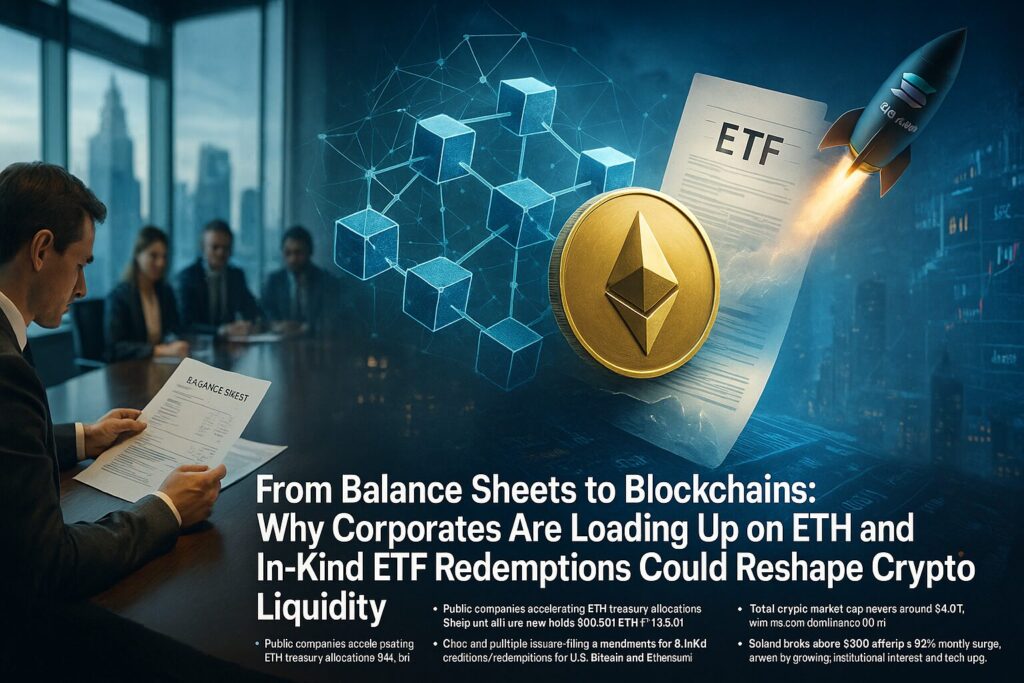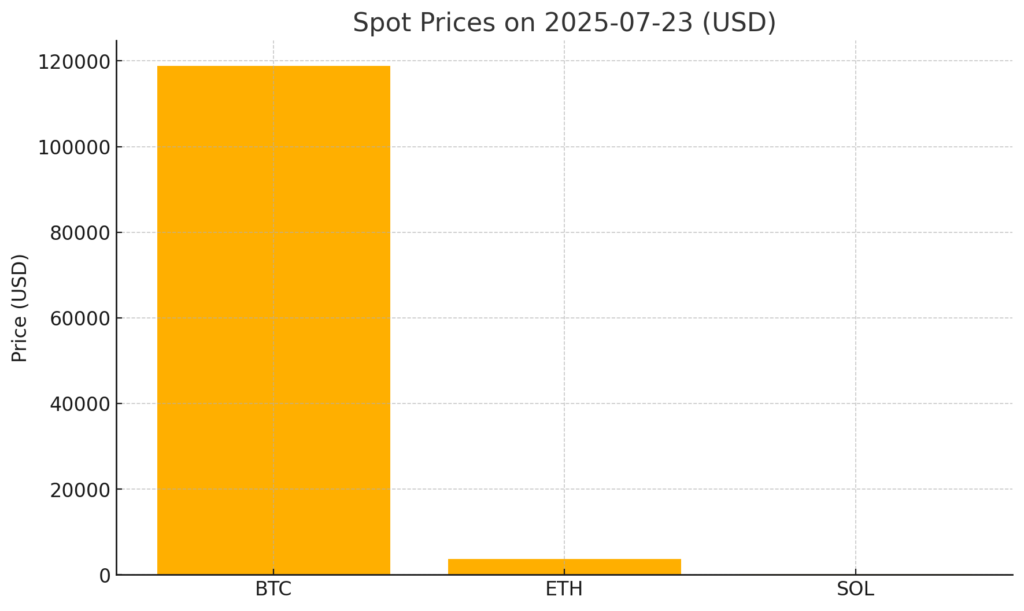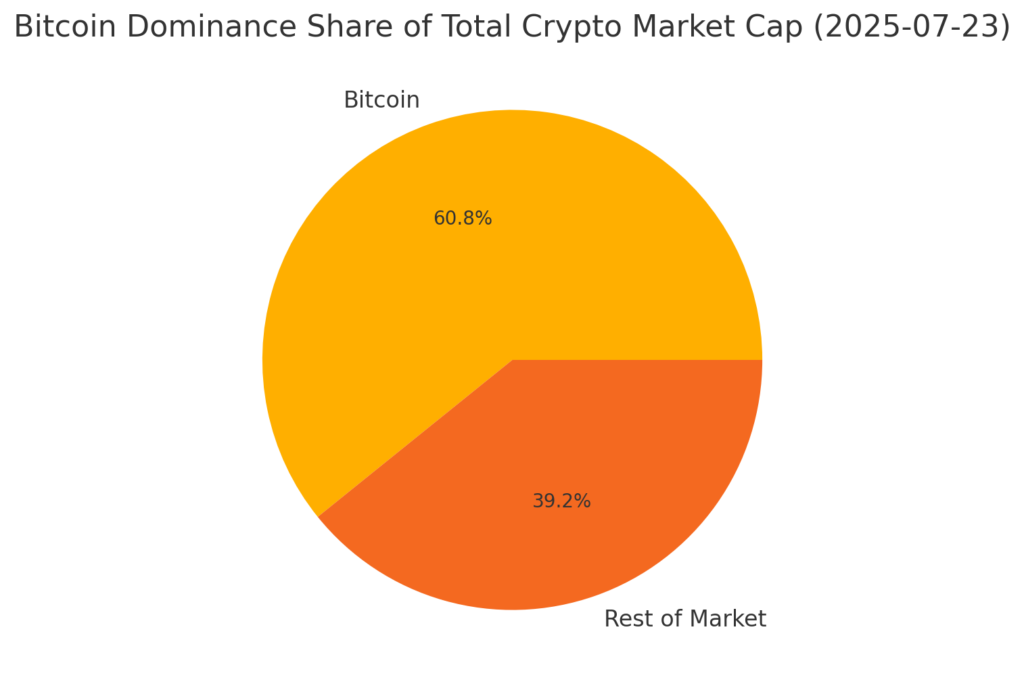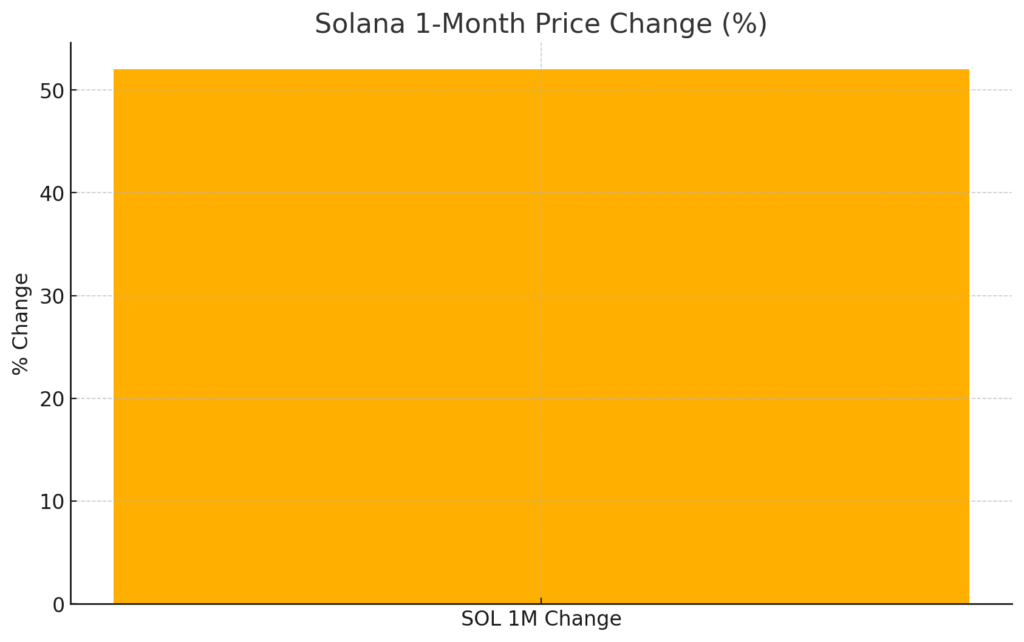
Main Points :
- Public companies are accelerating Ethereum (ETH) treasury allocations; SharpLink alone now holds 360,807 ETH (~$1.35B).
- Cboe and multiple issuers filed amendments to allow in‑kind creations/redemptions for U.S. Bitcoin and Ethereum spot ETFs—analysts call it a “positive sign” that the SEC is fine‑tuning, not blocking.
- The total crypto market cap hovers around $4.0T, with Bitcoin dominance near 60%.
- Solana (SOL) broke above $200 after a ~52% monthly surge, driven by growing institutional interest and tech upgrades.
- For builders and investors seeking new revenue streams, ETH on balance sheets, in‑kind ETF flows, and Solana’s institutional pivot signal a maturing, more liquid, multi‑chain future.
1. Corporations Are Quietly Turning ETH Into a Treasury Staple
The headline number is startling: listed companies now collectively control over 1.6 million ETH, according to figures cited in today’s Japanese report, with SharpLink Gaming (SBET) topping the leaderboard at 360,807 ETH—worth roughly $1.35 billion at ~$3,730 per ETH.
What’s new isn’t just that companies hold crypto—it’s what they hold and why. Bitcoin once monopolized the “digital gold” narrative, but ETH’s yield (staking), programmability (DeFi, tokenization), and alignment with enterprise blockchain pilots offer CFOs a different calculus: a working, cash‑flowing digital asset that can also collateralize on‑chain activity. This shifts treasury strategy from passive store‑of‑value to yield‑enabled balance‑sheet optimization.
Strategic implications for you (builders, treasurers, fund managers): ETH treasuries can underwrite on‑chain operations (e.g., paying gas for tokenized assets, providing liquidity to company‑run pools) while staking rewards offset fiat inflation. Expect more boards to ask: “Why hold idle dollars when we can stake ETH and still access liquidity via on‑chain collateral?”
2. In‑Kind Redemptions: The Next Liquidity Unlock for Spot ETFs
On July 22, Cboe filed amendments for five crypto ETFs to permit in‑kind creations/redemptions—letting authorized participants receive the underlying BTC or ETH instead of cash.
Bloomberg ETF analyst James Seyffart called the cluster of filings a “positive” sign: the SEC appears to be collaborating with issuers to finalize the framework, not stonewalling it.
Why this matters:
- Lower Friction, Tighter Spreads: In‑kind transfers reduce forced buying/selling of crypto for cash, trimming slippage and spreads.
- Better Inventory Management: Market makers can net positions across desks without cycling through dollars.
- Institutional On‑Ramps for Alt Strategies: If ETH redemptions are in‑kind, APs can stake, lend, or rehypothecate ETH directly—accelerating institutional DeFi participation.
For token teams and liquidity providers, ETF in‑kind flow means deeper spot liquidity and arbitrage pathways. This can stabilize prices (less cash drag) and increase demand for efficient custody, staking services, and cross‑exchange settlement rails.
3. Macro Backdrop: A $4 Trillion Market With Bitcoin Still in Charge
As of July 23, the global crypto market cap sits around $4.0 trillion; Bitcoin dominates with roughly 59–61% share.
Bitcoin trades near $118.8K, ETH around $3,730, and SOL about $201—levels cited in the original Japanese article and corroborated by market trackers.
This is a far cry from the 2022 winter lows and underscores a theme: institutional money, plus policy clarity (e.g., the U.S. “Genius Act” cited by multiple outlets), is rewriting the demand curve.
Volatility hasn’t vanished, but the base of capital is broader and stickier—pensions, insurers, corporates—reducing reflexive drawdowns and incentivizing derivative and hedging infrastructure.
4. Solana’s 200-Dollar Moment: Meme Chain No More
SOL pierced $200 after a one‑month 52% rally, buoyed by the narrative shift from “meme‑coin casino” to “institutional‑grade throughput chain.”
Catalysts include:
- Performance Upgrades: Announcements like the “Block Assembly Marketplace” (per CoinDesk) hint at faster finality and lower MEV leakage.
- TVL and DEX Volume Growth: On‑chain metrics (TVL > $11B) support the thesis that Solana isn’t just speculative—its DeFi plumbing is scaling.
- Institutional Curiosity: Funds seeking non‑ETH smart‑contract exposure are testing Solana for high‑frequency trading, RWAs (real‑world assets), and order‑book style DEXs.
For revenue‑hungry readers: building order‑flow analytics, MEV‑mitigation tools, or RWAs on Solana could be timely. With lower fees and fast confirmation, UX‑centric dApps (gaming, ticketing, payments) can differentiate.
5. What ETH on Balance Sheets Means for Product Builders
When corporates hold ETH:
- Staking-As-a-Service Demand Rises: Companies want compliant, auditor‑friendly staking channels. White‑label nodes, custody‑linked validators, and insurance backstops are product gaps.
- Treasury DeFi Policies: Expect internal policies on collateralization limits, protocol whitelists, and counterparty risk—an opportunity to sell governance tooling and risk dashboards.
- On‑Chain Accounting & Audit Tools: GAAP/IFRS treatment of staking rewards, impairment tests, and fair‑value marks need automation. Tools that stream prices, track ICAs (in‑kind assets), and auto‑generate working papers will sell.
6. In‑Kind ETF Mechanics: Where You Can Play
If (when) in‑kind flows go live:
- Prime Brokerage for Crypto: Firms that can custody, stake, lend, and swap in one stack win AP business.
- Cross‑Chain Settlement Layers: ETH/BTC legs might be paid out, but APs may hedge via perpetuals on other chains—interop and settlement APIs will be vital.
- Tax & Compliance Wrappers: Receiving assets instead of cash triggers different tax events; turnkey tax lot tracking and wash‑sale logic are niche but necessary.
Your action item: prototype APIs that plug into ETF AP workflows—intake (in‑kind), staking toggles, collateral routing, and P&L reporting—because TradFi desks will buy instead of build.
7. SOL, ETH, BTC—Complementary, Not Competing
BTC remains macro collateral and political leverage (see U.S. retirement account talk).
ETH is programmable yield and tokenization rail.
SOL is the speed layer courting high‑frequency DeFi and consumer apps.
For portfolio constructors: treat them as a stack—BTC for reserve, ETH for smart liquidity/yield, SOL for throughput‑driven use cases. Allocate based on business model: if you’re building payment rails, consider SOL/ETH; if you need long‑term collateral for lending desks, BTC/ETH make sense.
8. Regulatory Vectors to Watch
- SEC Final Language on In‑Kind: Subtle wording will dictate who can participate (only APs or broader institutions) and which assets qualify.
- Accounting Guidance for Staked Assets: FASB/IASB could refine how staking rewards are recognized—revenue vs. other income. (Inference based on ongoing debates.)
- Stablecoin Laws (e.g., “Genius Act”): Bank entry into stablecoins can crowd out DeFi stablecoin yields but also unlock massive RWA flows.
9. Practical Plays for “Next Revenue Streams”
- Treasury Yield Products: Package ETH staking + on‑chain money markets into compliance‑ready notes for SMEs.
- ETF Flow Analytics: Track primary/secondary ETF flows and predict in‑kind demand—sell to market makers and hedge funds.
- Cross‑Chain Payment SDKs: Let corporates settle invoices in ETH/SOL while auto‑hedging FX/volatility.
- On‑Chain Audit Trails: Timestamp treasury moves, board approvals, and staking decisions on a private ledger—sell “audit‑ready blockchain kits.”
- Institutional Solana Tooling: Dashboards for latency, outage alerts, and priority fees—think Datadog for Solana validators.
10. Risks & Mitigants
- Liquidity Crunch in Bear Swings: In‑kind redemptions can accelerate outflows too. Maintain circuit breakers and dual inventory (cash + crypto).
- Smart Contract/Validator Risk: ETH staking isn’t risk‑free; slashing, client bugs, and oracle failures exist. Diversify clients and use insurance.
- Regulatory Reversals: A new administration or black swan could pause progress. Build modular compliance layers to pivot quickly.
11. Figures & Visuals
Please insert the following figures at the indicated locations in the English article (and keep them in the same spots for the Japanese translation):
- [Figure 1 here]: Spot Prices on 2025‑07‑23 (BTC, ETH, SOL)

- [Figure 2 here]: Bitcoin Dominance Share (%)

- [Figure 3 here]: Solana 1‑Month Price Change (%)

12. Conclusion: A More Sophisticated Crypto Cycle
This cycle isn’t just “number go up.” Corporates are treating ETH like productive capital, ETF issuers are engineering more efficient liquidity rails, and alternative L1s like Solana are proving real throughput value. For those hunting new tokens, revenue, or practical blockchain deployments, the takeaway is clear: follow the rails (in‑kind flows), the treasuries (ETH), and the throughput (SOL). The winners will be those who build the picks and shovels for this institutionalized, multi‑chain economy.

